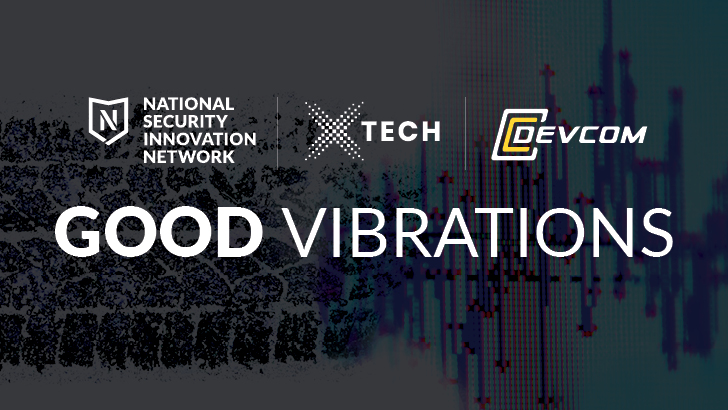

The Department of Defense National Security Innovation Network and the U.S. Army’s xTech Program, in partnership with the Combat Capabilities Development Command Army Research Laboratory Autonomous Sensing and Integration Branch, are pleased to launch the Good Vibrations Challenge. This competition encourages innovative solutions that extract unique features from ground vehicle signatures, collected using acoustic and seismic sensors, and solutions that develop classification algorithms to enable robust discrimination between the different classes of vehicles. This challenge is open to students who are currently attending an institution of higher education (IHE), pursuing a degree within the United States.
Submissions will be evaluated by a team of subject matter experts (SMEs). After an initial evaluation, up to 15 applicants will be selected as semi-finalists to participate in the Solution Development Round that begins in January 2024, and receive a $1,000 prize award. Up to 10 applicants will be selected as finalists to attend an in-person pitch event in the Washington, DC Capital Region during July 2024. The top three finalists with algorithms that have the highest scored performance accuracy will be respectively awarded $35,000, $25,000, and $15,000 in prize money.
Benefits of Participating
Why
The U.S. Army is seeking novel, robust techniques to discriminate threat vehicles using inexpensive terrestrial ground sensors to gain surveillance and reconnaissance of the battlefield. With advancements in signal processing and autonomy, Army modernization efforts need to advance the terrestrial sensing layer to serve as a complementary, persistent observation channel to the aerial and space layers. This challenge focuses on developing the core capabilities of acoustic and seismic sensing for target discrimination techniques.
Army Focus Areas
The Good Vibrations challenge is seeking novel techniques to extract acoustic and seismic features that are unique to various categories and classes of ground vehicles using real-time, power-efficient algorithms. The goal is to extract features technically relevant to target classification. Data signatures from resource-constrained acoustic and seismic sensing modalities will be provided as Government Furnished Information (GFI) to the semi-finalist applicants to extract target features and determine target geometry, kinematics, and category/class.


Oct 2, 2023 - Jan 3, 2024

Up to 15 semifinalists

$1K/each


Jan 17, 2024 - Feb 14, 2024

Up to 10 Finalist

N/A


Jul 15, 2024 - Jul 19, 2024

Up to 3 winners

1st Place: $35k 2nd Place: $25k 3rd Place: $15k


-


The individuals allowed to participate in this competition must be students at an accredited institution of higher education.
The student must be:
Applicants may submit as individuals or as teams.
